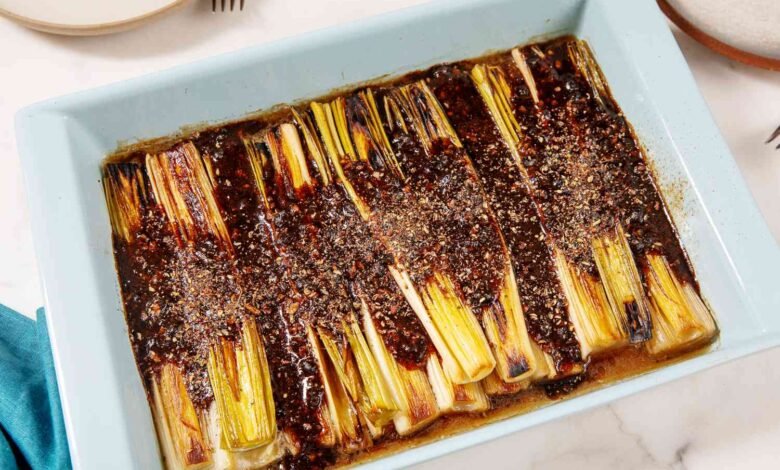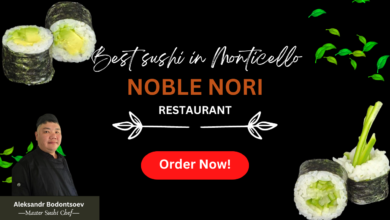

Why It Works
- Browning the leeks over high heat caramelizes the vegetable’s natural sugars, producing bittersweet flavors.
- Braising the leeks until tender results in a satisfying melt-in-your-mouth bite.
- A cornstarch slurry quickly thickens up the sauce to a glaze-like consistency.
I’m always on the hunt for new ways to cook vegetables, and this leek recipe has quickly become a favorite at home. It combines two cooking styles: The leeks are cooked using a method similar to European braised leeks, in which they are seared in a skillet and then gently cooked in the oven until tender. But the flavor profile of the sauce borrows heavily from Sichuan cooking. I think it’s clear that this leek recipe isn’t a traditional Sichuan dish, but it is strongly inspired by what I’ve learned about the cuisine. Served with bowls of warm fried rice or plain rice, it makes for a light but filling vegetarian dinner.
Technique Breakdown: The Braise
The recipe starts by trimming and halving the leeks lengthwise. Leeks must always be washed very carefully to remove sand and grit hidden in their compact layers; there is almost always more there than one might suspect, and it will ruin the dish if you don’t wash it out fully.
Serious Eats / Amanda Suarez
After a careful rinsing, dry the leeks well, then sear them in a skillet of hot oil on their cut sides until well browned. This builds flavor and allows us to deglaze the pan to pick up even more of the flavor of the browned sugars from the leeks. You can use water, vegetable stock, or, if a strictly vegetarian recipe isn’t a requirement, chicken stock to do this. This liquid then gets combined with the leeks in a baking dish before they’re slowly braised in the oven until meltingly tender.
While this happens, it’s time to make the sauce.
The Sauce
The sauce for the leeks is remarkably simple, and relies on several ingredients to deliver bold flavor. Doubanjiang (Sichuan chile bean paste) brings an earthy savoriness and mild heat, while Chinkiang vinegar provides a fruity tang. Soy sauce and garlic, meanwhile, add extra savoriness and depth. Together, they make a punchy and intensely savory sauce with gentle heat that complements the delicate sweetness of the leeks.
Serious Eats / Amanda Suarez
Since Fuchsia Dunlop’s book The Food of Sichuan introduced me to doubanjiang, it has become one of my pantry staples. Doubanjiang is an essential ingredient in many Sichuan dishes, including fish-fragrant eggplant and braised fish; it packs so much flavor that it functions as something like a super-ingredient, requiring little extra to build a deeply flavorful recipe (it is, without a doubt, the main reason mapo tofu is such a deeply satisfying dish to eat).
Hailing from Pixian in the Chinese province of Chengdu, the paste is made from split fava beans and wheat flour that have been mixed together, allowed to mold, then fermented with er jing tiao chiles. Salty and savory, doubanjiang is available to purchase at various stages of maturity. According to Dunlop, doubanjiang is most frequently used when it’s been fermented for two to three years, when it has a rich mahogany color. Its rich color might hint at a high degree of heat, but doubanjiang itself isn’t particularly hot.
Once the leeks are braised and the sauce is whipped up, you can simply pour the sauce on top of the leeks and serve. Easy peasy…or leaksy?
Source link



